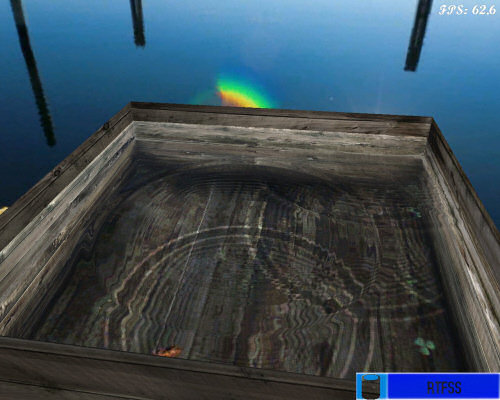RTFSS Project: Suposedly first implementation avaiable (binaries) of caustics mapping
Hi,
some days ago I have released RTFSS v1.1 (includes caustics mapping technique)
I think it's the first project avaiable (binaries and source code) that has a implementation of the caustics mapping..
I obtain with some simplifications (on the reciever geometry and caustic intensity estimation) high frame rates on today mid-range GPU (Geforce 6600GT) and the caustics quality is good (perhaps not as good as original implementation)..
View hi-res image:
Link.
RTFSS is a fast fluid simulator.. It also simulates viscoelastic materials and
shallow water eqs..
Using the last feature of the simulator I have implemented a "pool demo"
which recreates a pool filled with water..
For realistic rendering of water I have included raytraced refractions (with a more fast and exact technique that the described in the paper but constrained to boxes..) and caustics.. This two features a computed on
GPU and the caustics are made via caustics mapping technique..
It also features enviromental 3D audio with OpenAL..
It goes very fast at +70fps with a Geforce 6600GT with a 200x200 grid
for the water simulator and with caustics+raytraced refractions+reflections+fresnel all on GPU.
The binaries are compiled for SSE2 capable processors (Pentium4 or Athlon 64 or higher). I will publish soon binaries with no CPU requeriments (Pentium or higher).
Visit at
http://rtfss.sourceforge.net.

